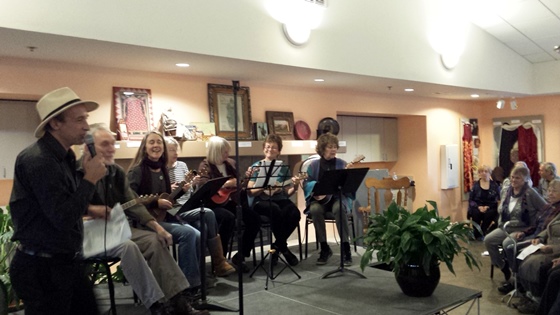||| BY theORCASONIAN OP-ED REPORTER MATTHEW GILBERT |||
The issue of establishing caps on vacation rental permits continues to attract significant public interest, and at the August 20 meeting of the SJC Planning Commission, it was discussed at length with the goal of providing a recommendation to the Department of Community Development (DCD). This was preceded by another extensive comment period.
Those in favor of generous limits – or no cap at all – generally coalesced around the following arguments:
- The data on impacts is too thin for picking what would amount to an “arbitrary” number. They want a more thorough study
- Advocates of caps are too “emotional” re: impacts and dangers (a new talking point).
- Enforcement remains a necessary – and underutilized – tool.
- There were repeated concerns about lost income (though again, no current VR owners with legally compliant permits are threatened).
Those in favor of caps argued that
- A cap be tied to “currently active and compliant” permits only (the most conservative)
- These are businesses and should be treated as such.
- Enforcement remains a necessary – and underutilized – tool.
- Permits shouldn’t run with the land.
- Those who fear lost income have nothing to fear. Their resistance to caps on such grounds is equally “emotional.”
Striking a balance between individual rights and desires and community rights and desires remains an ongoing flashpoint.
Give Me a Number
Opening the “official” discussion was Erika Shook, DCD’s outgoing planning director (whose last day is September 3). She began by identifying three basic approaches to setting an island-wide cap:
- Leaving room for growth in permits (the DCD recommended a robust 1,200)
- Keeping the total at current levels of legally compliant permits (about 630)
- Establishing a cap below current levels of compliant permits
She also noted that a new $160 yearly fee is being assessed to all permit holders, which may help shake out a few. A portion of this will likely be allocated to enforcement. As explained by Shook, “Last year was an anomaly regarding enforcement. All of our energy went to permit reviews. This year we will refocus on enforcement, and various levels of compliance procedures are already in motion. And don’t forget that we’re only in the third year of a new ordinance.”
When pressed on why permits go with the property (“which only helps the owner and property valuation”) and why such uses aren’t treated as businesses, Shook responded (at various points) that they are land use permits and that changing them would be “complicated,” a “big deal,” and “controversial.” When the question of how to change these permits – and whether different types of VR owners could be treated differently – was later posed to Deputy Prosecuting Attorney Amy Vira, she explained that, “As a legal advisor to the County, it is not appropriate for me to comment on this process or provide any legal analysis outside of what has been provided to the County Council in open session.” An interesting response, which can be translated as meaning the Council has no interest in taking this on.
At the end of the discussion, Commission member Sheila Gaquin from Orcas recommended setting the cap at the number of permits that are currently active and compliant (as of July 31). “This seems reasonable. It allows for attrition. Nothing we are recommending would affect current permit holders. it’s all about controlling future permit holders.”
That number is 405, which would be allocated as follows: 207 (Orcas), 136 (San Juan), 56 (Lopez), and 6 on the outer islands. No new permits would be issued until, by attrition or other means, the total number fell below 405. Compliant but inactive permits would be protected by such a cap. Assuming some or most of them re-activate, it could take years to reach that 405, essentially extending the moratorium indefinitely while broadening it to include the entire county except Roche Harbor, Rosario, and Friday Harbor.
Nick Knoellinger felt that “Setting a cap at 405 and waiting for attrition will not solve our issue. This will incentivize current holders to keep or ‘activate.’ It’s like putting a Band-Aid on a gunshot wound. We need to use code enforcement and land use revision . . . the Council has limited us to discussing caps, but there will be consequences to putting a cap in place without a broader perspective on tourism, housing, and resources.”
David Kane asked if land use changes are “insurmountable.”
Said Shook: “You could add something for new permits but dealing with existing permit holders would be messy.” Vacating any permit that was issued before 2018 (which includes most of them) would entail a lengthy process and a public hearing. “Council is aware of these other issues,” added Shook, “but the clock is ticking on the moratorium. Make a recommendation, we’ll draft legislation and then hold a public hearing, and then you can make a final recommendation. It will then go to Council, which will hold its own public hearing. And we’re still legally obligated to finish the Comp Plan.”
Steve Smith noted that, “We’re being asked to come up with a non-arbitrary number. Sheila has proposed 405. There has to be some logic behind it . . . but we do have a much larger issue. This only starts the conversation. We can pick any number, but will we be sued later by a potential permit applicant because it was ‘arbitrary’”?
There was a call for a vote, and, surprisingly, Gaquin’s motion passed unanimously.
Smith then introduced several motions that would add conditions and reporting requirements for VR permit holders. One of them would require the filling out of an annual report to include # of nights rented, # of guests served, total revenue, total taxes paid, and annual water usage (as available). This, too, was unanimously approved.
Next Steps
- The DCD will develop an ordinance for Planning Commission review (and potential amendment) on 9/17.
- There will be a legal review on the legislation.
- The Planning Commission will hold a public hearing, tentatively scheduled for 10/15.
- The final ordinance will go back to Council, which will have its own hearings, ideally by the end of the year to stay on track with the moratorium’s scheduled expiration on Jan. 13, 2022.









Sheila Gaquin from Orcas recommended setting the cap at the number of permits that are currently active and compliant (as of July 31). “This seems reasonable. It allows for attrition. Nothing we are recommending would affect current permit holders. it’s all about controlling future permit holders.”
There is nothing arbitrary about choosing the current active and compliant permits as of July 31, 2021. The data comes from an actual San Juan County Department of Community Development spreadsheet that had to be ferreted out with a public records request. The numbers that were being proposed before are the arbitrary ones.